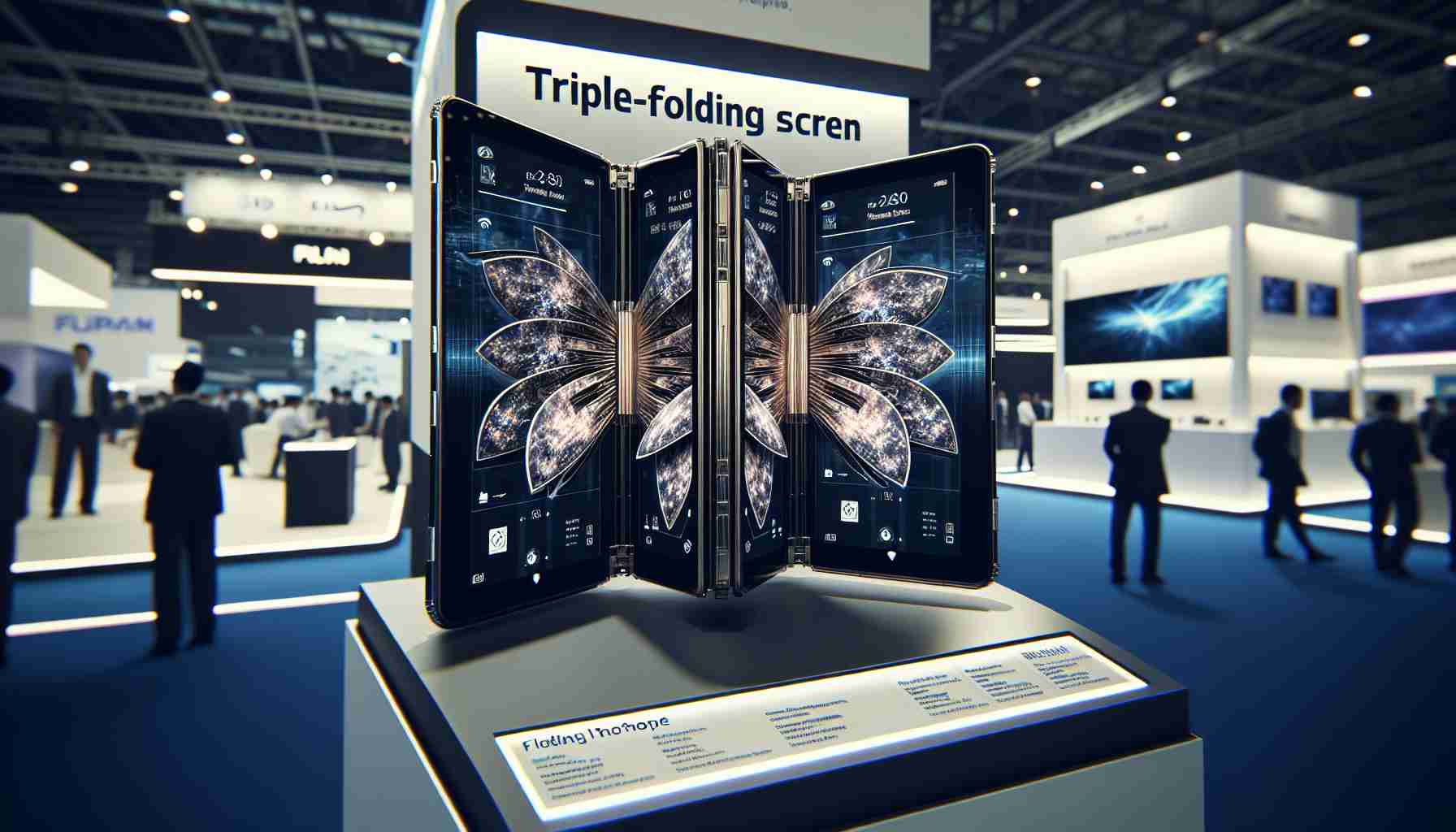TCL has taken the wraps off a groundbreaking triple-folding smartphone prototype at the Society for Information Display (SID) 2024 show in San Jose, California. Currently unnamed, the device is associated with TCL’s subsidiary, China Star Optoelectronics Technology (CSOT), renowned for its display manufacturing prowess.
The showstopper of this device is its 7.85-inch Free-type display, capable of folding in a “Z” or “G” shape or expanding into a tablet form. TCL prides itself on integrating numerous leading-edge technologies into the screen, such as Tandem structure, LTPO backplane, and PLP packaging, enhancing brightness, decreasing power consumption, and extending longevity.
Despite the complexity of its folding mechanism, the prototype boasts an impressively sleek profile, measuring just 0.472 mm thick when unfolded and 17 mm when folded. In addition to its unique triple-fold screen, TCL has incorporated the world’s first under-display face recognition technology. This advanced feature leverages a sophisticated set of sub-panel sensors, allowing for 3D facial recognition—even with potential obstructions—coupled with an exclusive security layer for a seamless and secure biometric authentication experience. The face recognition area features a pixel density of 420 ppi, slightly less than the rest of the display yet still ensuring consistent content visibility.
While TCL has not yet disclosed the screen resolution, the refresh rate is highly adaptable, ranging from 1 to 120 Hz based on the displayed content. The specifics regarding technical specifications, pricing, and launch timeline remain under wraps for this Chinese electronics giant. It’s worth noting that competitors like Huawei and Samsung are rumored to be developing similar triple-folding smartphones, yet neither has officially announced their offerings.
Key Questions and Answers:
Q: What is the significance of TCL’s triple-folding smartphone prototype?
A: The triple-folding smartphone prototype by TCL demonstrates the company’s innovation in the flexible display market. It showcases the potential for portable devices to offer the compactness of a smartphone and the expanded screen size of a tablet.
Q: What are the standout features of TCL’s new prototype?
A: The device’s main features include a 7.85-inch Free-type display that can fold into different shapes, under-display face recognition technology, a thin profile, and an adaptive refresh rate ranging from 1 to 120 Hz.
Q: Are there any competitors in the market working on similar technology?
A: Yes, other tech giants like Huawei and Samsung are rumored to be developing triple-folding smartphones, indicating a growing interest in foldable display technology among major electronics manufacturers.
Key Challenges and Controversies:
Designing a robust folding mechanism is a significant challenge for foldable devices, as it must endure numerous folding cycles without failure. TCL’s triple-folding mechanism would be subjected to even more stress due to its increased complexity.
The durability of the folding screen also remains a concern. Foldable displays are prone to creasing and other long-term wear and tear. Ensuring longevity and maintaining display quality over time are critical challenges.
Regarding controversies, there may be issues related to the cost-effectiveness of such advanced technology. Triple-folding smartphones could be prohibitively expensive for average consumers, limiting the market reach of these innovative devices.
Advantages and Disadvantages:
Advantages:
– The large folding screen accommodates various use cases, from gaming to productivity.
– The slim profile when unfolded makes the device surprisingly portable for its screen size.
– The under-display face recognition technology enhances user experience by offering seamless authentication.
– The adaptive refresh rate promotes power efficiency and enhances display quality.
Disadvantages:
– The triple-folding mechanism could be prone to mechanical wear and requires intricate engineering to ensure reliability.
– The cost of production, and consequently the retail price, might be high due to the sophisticated technology, which could limit its adoption.
– New form factors might involve incompatibility issues with current software applications, necessitating additional development to optimize the user experience.
For related credible information, you could visit the following links:
– Official TCL Website
– Society for Information Display (SID)
Given that you have been provided with an article excerpt lacking specific announcement details like pricing or technical specs, it’s important to consider the broader context of the rapidly evolving foldable smartphone market, which might impact TCL’s prototype development and consumer adoption strategies.
